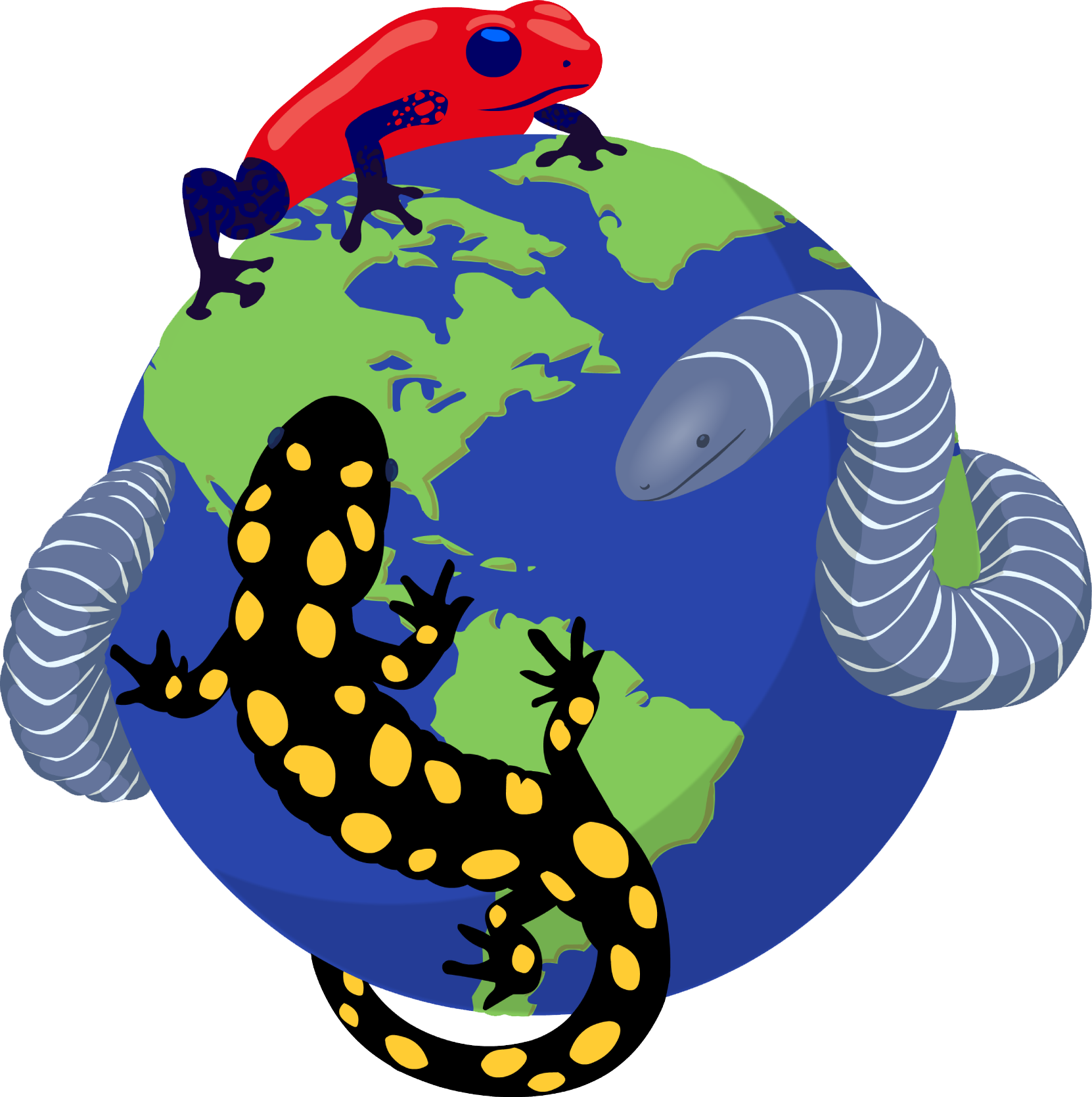|
Isthmura corrugata Sandoval-Comte, Pineda-Arredondo, Rovito & Luría-Manzano, 2017
Corrugated Salamander; Salamandra corrugada | family: Plethodontidae subfamily: Hemidactyliinae genus: Isthmura |
| Species Description: Sandoval-Comte A, Pineda E, Rovito SM, Luria-Manzano R 2017 A new species of Isthmura (Caudata: Plethodontidae) from the montane cloud forest of central Veracruz, Mexico. Zootaxa 4277: 573-582. | |
 © 2017 Adriana Sandoval-Comte (1 of 9) |
|
|
|
Description Isthmura corrugata differs from all other bolitoglossines except Pseudoeurycea papenfussi by its bulging costal folds. Its larger size distinguishes it from all species in the genus Aquiloeurycea, and the presence of a sublingual fold distinguishes it from similarly sized species of Bolitoglossa. It differs from robust species of Pseudoeurycea by having more substantial foot webbing and triangularly shaped toes. It is the second smallest Isthmura, however, because both specimens are male, and female Isthmura are typically larger than males, it is possible their maximum size may be greater than currently recorded. Isthmura corrugata is unique from other Isthmura species due to the lack of spots or marking on the dorsum, as well as its relatively larger head and shorter tail (Sandoval-Comte et al. 2017). In life, I. corrugata is uniformly dark brown from tail to head, as well as on the hands and feet. The eyelids, jaw margins, and gular surface are a light rufous color, while the proximal half of the flanks are a deep wine red that extends to the venter and ventral side of the limbs. Coloration in alcohol is very similar to that in life, only paler (Sandoval-Comte et al. 2017). Variation cannot be quantified until more individuals of this species are found. Distribution and Habitat Country distribution from AmphibiaWeb's database: Mexico
It is possible that I. corrugata may inhabit additional localities around Cofre de Perote, extending to Sierra Norte de Puebla near Cuetzalan. These areas share a high proportion of amphibian fauna (Sandoval-Comte et al. 2017). Life History, Abundance, Activity, and Special Behaviors Other amphibian species found in sympatry with I. corrugate include Aquiloeurycea cafetalera, Parvimolge townsendi, Thorius pennatulus, Pseudoeurycea lynchi, and Chiropterotriton chiropterus (Sandoval-Comte et al. 2017). Trends and Threats Although the type locality is within a municipal protected reserve, the region is threatened by logging and agricultural activities. Many plethodontid species found on the eastern slope of Cofre de Perote are in high-risk IUCN’s Red List categories. The habitat in which I. corrugata lives is thus a high priority for plethodontid salamander conservation (Sandoval-Comte et al. 2017). Comments Based on Maximum Likelihood and Bayesian analyses of 16S and cytb mitochondrial DNA sequences, I. corrugate is sister to the clade composed of I. boneti and I. maxima (Sandoval-Comte et al. 2017). The genus Isthmura was formerly considered part of the Pseudoeurycea bellii complex (Parra-Olea et al. 2005) before being recognized as an independent genus (Rovito et al. 2015). The specific epithet “corrugata” is a reference to their corrugated appearance (Sandoval-Comte et al. 2017).
References
Parra-Olea, G., Garcia-Paris, M., Papenfuss, T. J. and Wake, D. B. (2005). ''Systematics of the Pseudoeurycea bellii (Caudata: Plethodontidae) species complex.'' Herpetologica, 61, 145-158. Rovito, S.M., Parra-Olea, G., Recuero, E., Wake, D.B. (2015). ''Diversification and biogeographical history of Neotropical plethodontid salamanders.'' Zoological Journal of the Linnean Society, 175, 167-188. Sandoval-Comte, A., Pineda, E., Rovito, S.M., Luría-Manzano, R. (2017). ''A new species of Isthmura (Caudata: Plethodontidae) from the montane cloud forest of central Veracruz, Mexico.'' Zootaxa, 4277(4), 189-198. Originally submitted by: Shea Nolan (first posted 2018-07-09) Edited by: Ann T. Chang (2018-07-09) Species Account Citation: AmphibiaWeb 2018 Isthmura corrugata: Corrugated Salamander; Salamandra corrugada <https://amphibiaweb.org/species/8637> University of California, Berkeley, CA, USA. Accessed May 23, 2025.
Feedback or comments about this page.
Citation: AmphibiaWeb. 2025. <https://amphibiaweb.org> University of California, Berkeley, CA, USA. Accessed 23 May 2025. AmphibiaWeb's policy on data use. |



 Map of Life
Map of Life